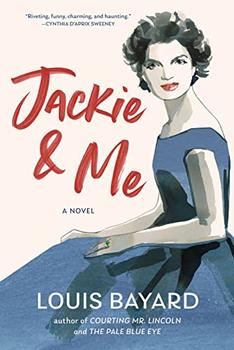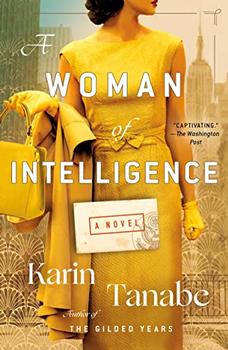Summary | Excerpt | Reviews | Beyond the book | Read-Alikes | Genres & Themes | Author Bio

A Novel Starring Rita Hayworth and Orson Welles
by Jerome CharynNarrated by a starry-eyed lesbian, Big Red reimagines the tragic career of Rita Hayworth and her indomitable husband, Orson Welles.
Since he first appeared on the American literary scene, Jerome Charyn has dazzled readers with his "blunt, brilliantly crafted prose" (Washington Post). Yet Charyn, a beloved comedic novelist, also possesses an extraordinary knowledge of Golden Age Hollywood, having taught film history both in the United States and France.
With Big Red, Charyn reimagines the life of one of America's most enduring icons, "Gilda" herself, Rita Hayworth, whose fiery red tresses and hypnotic dancing graced the silver screen over sixty times in her nearly forty-year career. The quintessential movie star of the 1940s, Hayworth has long been objectified as a sex symbol, pin-up girl, and so-called Love Goddess. Here Charyn, channeling the ghosts of a buried past, finally lifts the veils that have long enshrouded Hayworth, evoking her emotional complexity―her passions, her pain, and her inner turmoil.
Charyn's reimagining of Hayworth's story begins in 1943, in a roomette at the Hollywood Hotel, where narrator Rusty Redburn―an impetuous, second-string gossip columnist from Kalamazoo, Michigan―bides her time between working as a gofer in the publicity offices of Columbia Pictures, volunteering at an indie movie house, and pursuing dalliances with young women on the Sunset Strip. Called upon by the manipulative Columbia movie mogul Harry "The Janitor" Cohn to spy on Hayworth―then, the Dream Factory's most alluring "dame," and Cohn's biggest movie star―Rusty becomes Rita's confidante, accompanying her on a series of madcap adventures with her indomitable husband, the "boy genius" Orson Welles.
But Rusty, an outlaw who can see beyond the prejudices of Hollywood's male-dominated hierarchy, quickly becomes disgusted with the way actresses, and particularly Rita, are exploited by men. As she struggles to balance the dangerous politics of Tinseltown with her desire to protect Rita from ruffians and journalists alike, Rusty has her own encounters―some sweet, some bruising―with characters real and imagined, from Julie Tanaka, an interned Japanese-American friend, to superstars like Clark Gable and Tallulah Bankhead, as well as notorious Hollywood gossip columnist Louella Parsons.
Reanimating such classic films as Gilda and The Lady from Shanghai, Big Red is a bittersweet paean to Hollywood's Golden Age, a tender yet honest portrait of a time before blockbusters and film franchises―one that promises to consume both Hollywood cinephiles and neophytes alike. Lauded for his "polymorphous imagination" (Jonathan Lethem), Charyn once again has created one of the most inventive novels in recent American literature.
Where intrigue and film discussion (occasionally somewhat elegiac in tone) hold each other in balance, the book flows pleasantly. It is when the sleuth gives way to the diatribist — notably towards the book's middle — that the result can be somewhat slow. The narrative then sometimes sounds like it belongs more to a documentary in tribute of Welles's filmmaking than to a novel. Charyn, quite capable in the good old days of the sort of operatic metafiction whose mere plot synopsis — or rather the very idea of presenting one — was enough to give you a headache, offers simpler fare here. Big Red is not the worse for it...continued
Full Review
(747 words)
This review is available to non-members for a limited time. For full access,
become a member today.
(Reviewed by Alexandros Mantzaris).
 Louella Parsons (1881-1972) was a pioneer newspaperwoman, a famous movie columnist and, for many years, a principal purveyor of Hollywood gossip to the world. Nevertheless, according to Samantha Barbas, author of an extremely thorough biography of Parsons, it was only in 1949 that she first veered into the realm of scandal by revealing Ingrid Bergman's illicit pregnancy to an astonished public.
Louella Parsons (1881-1972) was a pioneer newspaperwoman, a famous movie columnist and, for many years, a principal purveyor of Hollywood gossip to the world. Nevertheless, according to Samantha Barbas, author of an extremely thorough biography of Parsons, it was only in 1949 that she first veered into the realm of scandal by revealing Ingrid Bergman's illicit pregnancy to an astonished public.
Upon reading the above, this reviewer wondered what on earth Louella had been doing all that time previously if not scandal-mongering. Yet, hard as it may be to conceive today, it seems that she built the better part of her long and lucrative career gossiping non-scandalously. That is, she spent a few decades persuading her audience that their ...
This "beyond the book" feature is available to non-members for a limited time. Join today for full access.

If you liked Big Red, try these:

by Louis Bayard
Published 2023
Master storyteller Louis Bayard delivers a surprising portrait of a young Jackie Kennedy as we've never seen her before.

by Karin Tanabe
Published 2022
From "a master of historical fiction" (NPR), Karin Tanabe's A Woman of Intelligence is an exhilarating tale of post-war New York City, and one remarkable woman's journey from the United Nations, to the cloistered drawing rooms of Manhattan society, to the secretive ranks of the FBI.
There are two kinds of light - the glow that illuminates, and the glare that obscures.
Click Here to find out who said this, as well as discovering other famous literary quotes!